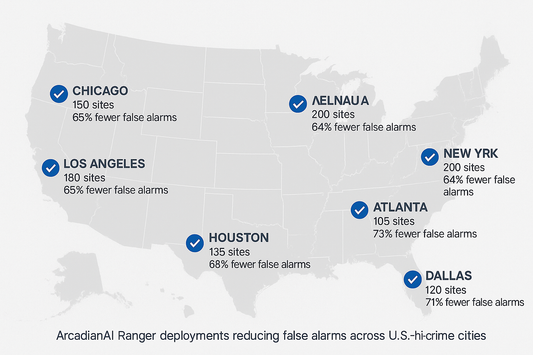Live Dataset: Assassination Attempts on U.S. Politicians: 60 Years of Data & Patterns (1963–2025)
Six Decades of Political Violence in America: What the Data Reveals from JFK to 2025 On a sunny afternoon in Dallas in 1963, a rifle cracked through the air — and history changed. President John F. Kennedy was assassinated, shocking the world and shaking America's sense of stability. That single...

- Six Decades of Political Violence in America: What the Data Reveals from JFK to 2025
- Why We Built the Political Assassination Database
- A Sobering Total: 29 Attempts in 62 Years
- A Disturbing Climb: Political Violence Over the Decades
- Insight
- Guns Dominate the Method of Attack
- Insight
- 👤 Who Commits These Acts?
- 🎯 What Happens to the Attackers?
- ⚠️ Why This Work Is More Urgent Than Ever
- 🛡️ The Role of Prevention: What Can Be Done?
- 🔎 Access the Full Dataset
- View the Live Dataset
- 🧠 Final Thoughts
Six Decades of Political Violence in America: What the Data Reveals from JFK to 2025
On a sunny afternoon in Dallas in 1963, a rifle cracked through the air — and history changed. President John F. Kennedy was assassinated, shocking the world and shaking America's sense of stability.
That single event marked not just a national tragedy, but the beginning of a disturbing pattern: politically motivated violence in the United States.
Today, over 60 years later, the threat hasn’t faded — in fact, it's growing.
Why We Built the Political Assassination Database
Politically motivated attacks aren’t random. They’re data-rich, ideologically charged, and often preventable.
To better understand them, the Violence Prevention Project, with support from ArcadianAI Security, launched the Political Assassination Database — the first of its kind to systematically track every U.S. political assassination and attempt from 1963 to the present.
This database isn’t just a historical archive. It’s a diagnostic tool — helping researchers, law enforcement, policymakers, and the public spot patterns, assess risk, and build defenses against what may become an increasingly common threat.
A Sobering Total: 29 Attempts in 62 Years
Since JFK's death, there have been 29 documented cases of political assassinations or attempts in the United States.
These cases span presidential candidates, governors, state legislators, judges, and local leaders. From fringe radicals to ideologically driven lone actors, the targets — and the perpetrators — reflect the complexity of America's political divide.
While 29 might not sound overwhelming, each case has had national ripple effects:
- Inspiring copycats
- Shaking public confidence
- Inflaming partisanship
- And, in some cases, changing election outcomes or policy paths
Political violence, in short, is never isolated — it’s contagious.
A Disturbing Climb: Political Violence Over the Decades
The frequency of attacks isn’t static — it mirrors the nation’s sociopolitical climate:
- 1960s: 3 incidents
- 1970s: 7 incidents (the peak so far)
- 1980s: 3 incidents
- 1990s: 2 incidents
- 2000s: 3 incidents
- 2010s: 5 incidents
- 2020s: 6 incidents (and we’re only halfway through)
Insight
The 1970s — a time of Watergate, Vietnam backlash, and civil unrest — saw the highest number of attacks. But today, the 2020s are on pace to surpass it, with six assassination attempts already documented before the decade's midpoint.
This suggests a new wave of political violence is emerging, driven by digital radicalization, institutional mistrust, and social fragmentation.
Guns Dominate the Method of Attack
Of the 29 attacks, 22 involved firearms — a sobering 75% of all incidents. Here's the breakdown:
- 17 with handguns
- 5 with assault-style weapons
- 3 with rifles
- 1 with a shotgun
- 1 unspecified firearm
Insight
Despite political debate about gun control often centering on mass shootings, this data shows that firearms are also the weapon of choice for political assassinations. These are not random attacks — they’re often premeditated, tactical, and ideologically driven.
The implications are clear: easy access to guns isn’t just a public safety issue — it’s a national security concern.
👤 Who Commits These Acts?
While motives and affiliations vary, common traits among perpetrators stand out:
- Almost all are male
- Most were in personal or mental health crisis
- Many had a documented history of extremist or conspiratorial beliefs
- Firearms were almost always acquired legally or easily accessed
- A desire for notoriety, revenge, or symbolic violence is often present
Insight
- These attackers often follow a trajectory similar to mass shooters:
- They leak their intent.
- They escalate in rhetoric.
- They post online.
- And then they act.
Many of these attacks were predictable — and therefore, preventable.
🎯 What Happens to the Attackers?
The database also tracks outcomes after the attacks. Here’s how justice or resolution played out:
- 11 fled but were later arrested
- 8 were arrested at the scene
- 4 were killed by police
- 3 died by suicide
- 2 escaped entirely
- 1 was killed by someone else
Insight:
Over one-third of attackers initially escaped, highlighting gaps in on-site security and coordinated emergency response — especially in non-federal contexts like local government buildings or private residences.
⚠️ Why This Work Is More Urgent Than Ever
On June 14, 2025, Minnesota House Speaker Melissa Hortman and her husband were tragically killed in their home. Senator John Hoffman and his wife were also shot multiple times in the same targeted attack.
This wasn’t a random act. It was part of a growing pattern.
We’re not just facing a political crisis. We’re facing a public safety crisis — one that demands proactive intervention, not reactive grief.
🛡️ The Role of Prevention: What Can Be Done?
Political violence doesn’t come out of nowhere. It brews. It escalates. It leaks.
Which is why the Violence Prevention Project is focused on prevention, not just prosecution. Our approach includes:
- Threat assessment tools modeled after Secret Service protocols
- Community training to recognize early warning signs
- Advocacy for firearm restrictions for individuals in crisis
- Monitoring online hate speech and radicalization pipelines
The goal: to stop the next tragedy before it starts.
🔎 Access the Full Dataset
This article offers a snapshot — but the full story lives in the data.
The Political Assassination Database includes:
- Incident dates, locations, and summaries
- Weapon types and how they were obtained
- Perpetrator motives and ideological markers
- Legal outcomes and justice records
- Trends by decade, geography, and political affiliation
View the Live Dataset
Use it. Cite it. Build on it.
Let’s prevent the next tragedy before it happens.
🧠 Final Thoughts
From JFK’s assassination to the latest attack in 2025, political violence has never left us.
It evolves with the times.
It adapts to our platforms.
And now, it’s rising again.
But data gives us a fighting chance.
Every case in the database is a warning. Every data point is a signal. And every signal is a chance to act — before a bullet, a bomb, or a blade turns political rhetoric into irreversible loss.
We owe it to our leaders.
We owe it to our democracy.
We owe it to each other.
Source: Link

Security is like insurance—until you need it, you don’t think about it.
But when something goes wrong? Break-ins, theft, liability claims—suddenly, it’s all you think about.
ArcadianAI upgrades your security to the AI era—no new hardware, no sky-high costs, just smart protection that works.
→ Stop security incidents before they happen
→ Cut security costs without cutting corners
→ Run your business without the worry
Because the best security isn’t reactive—it’s proactive.






